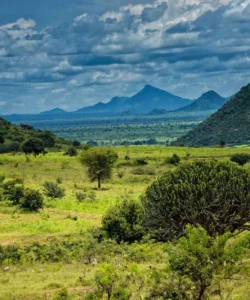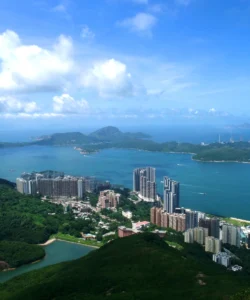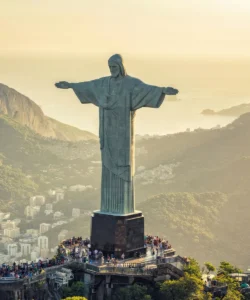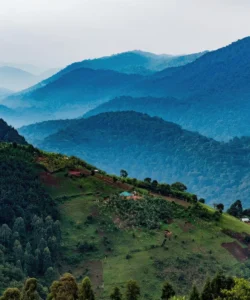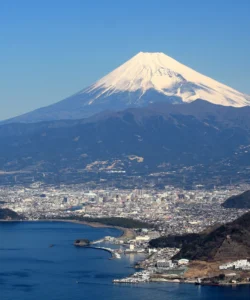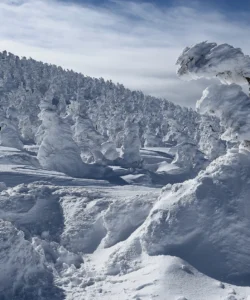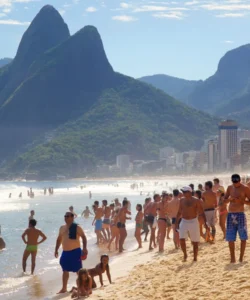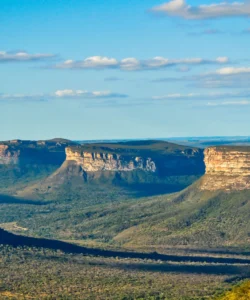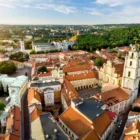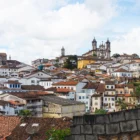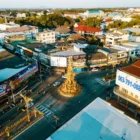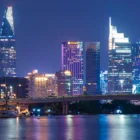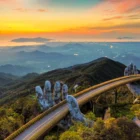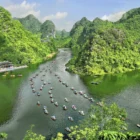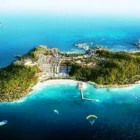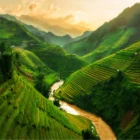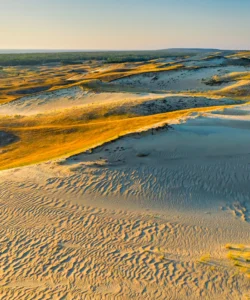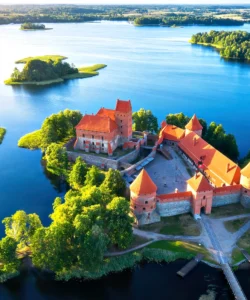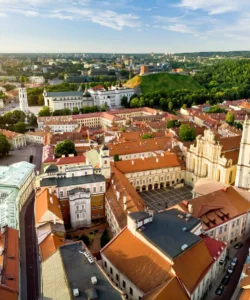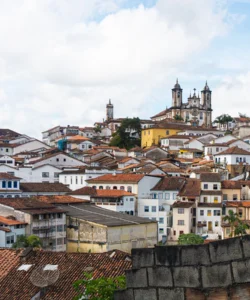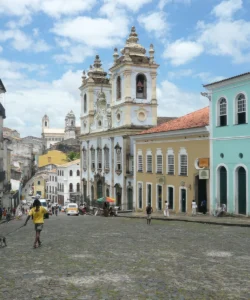The Amazon Rainforest, often called the “Lungs of the Earth,” is the largest tropical rainforest on the planet, an immense and vital ecosystem spanning across nine South American countries, primarily Brazil, Peru, and Colombia. Cutting through its heart is the majestic Amazon River, the largest river in the world by discharge volume and, arguably, the longest. Together, this rainforest and river system represent a staggering concentration of biodiversity, a powerful force in global climate regulation, and a living testament to the sheer scale and complexity of natural wonders.
Name: Amazon Rainforest (Portuguese: Floresta Amazônica; Spanish: Selva Amazónica) and Amazon River (Portuguese: Rio Amazonas; Spanish: Río Amazonas)
Location and Size:
The Amazon Rainforest covers approximately 6.7 million square kilometers (2.1 million square miles), an area larger than the European Union. It spans Brazil, Peru, Colombia, Ecuador, Bolivia, Venezuela, Guyana, Suriname, and French Guiana. Brazil contains about 60% of the rainforest.
The Amazon River, with its headwaters in the Andes Mountains of Peru, flows eastward across the continent, covering at least 6,400 kilometers (4,000 miles) before emptying into the Atlantic Ocean on the northeastern coast of Brazil. Its vast basin is nearly twice the size of the Congo River basin.
How to get there:
Reaching the Amazon Rainforest and River, involves a significant international journey to South America, followed by domestic travel within an Amazonian country:
- Từ Gateway City đến Amazon:
- Bằng đường hàng không: Nhiều thành phố cửa ngõ của Amazon (như Manaus, Iquitos, Leticia) có sân bay nội địa với các chuyến bay kết nối sâu hơn vào khu vực hoặc đến các thị trấn nhỏ hơn trong rừng rậm.
- By Riverboat: A classic Amazonian experience. From cities like Manaus or Iquitos, you can take multi-day riverboat journeys to various jungle lodges or remote communities. This is often part of a guided tour.
- By Guided Tour: The most common and recommended way to experience the Amazon is through organized tours. These typically arrange flights, ground transfers, river transport, accommodation (jungle lodges), and guided excursions into the rainforest.
Best Time to Visit:
The Amazon Rainforest is hot and humid year-round. However, there are two main seasons:
- Dry Season (roughly June to November): Less rainfall, trails are firmer for hiking, and animals may congregate more around water sources, making them easier to spot. River levels are lower, allowing for exploration of different areas.
- Wet Season (roughly December to May): Higher rainfall, lush vegetation, higher river levels (allowing boats to navigate deeper into flooded forests), and excellent for birdwatching and exploring by canoe. Mosquitoes can be more prevalent.
Landscape and Architecture:
The Amazon Rainforest and River’s “architecture” is overwhelmingly natural, defined by its immense scale, incredible biodiversity, and the adaptations of both flora and fauna to its unique environment. Human “architecture” is primarily functional and integrated with nature, focusing on indigenous settlements and eco-lodges:
- Dense, Multi-layered Rainforest: The defining feature. It’s a vertical world of towering emergent trees (some over 60 meters tall), a dense canopy that filters sunlight, a sub-canopy layer, an understory, and a forest floor. This complex stratification supports immense biodiversity.
- The Amazon River and its Tributaries: The “River Sea” itself is a massive, often muddy, brown artery, capable of changing course and creating new channels. It’s fed by thousands of tributaries, which vary in color (whitewater, blackwater, clearwater) depending on their geological origins.
- Igapó (Flooded Forests) and Varzea (Floodplains): During the wet season, vast areas of the forest become flooded (Igapó), creating unique aquatic ecosystems where trees stand in water. Varzea are seasonally flooded plains with richer soils.
- Lakes and Oxbow Lakes: Numerous lakes, including crescent-shaped oxbow lakes (formed from abandoned river meanders), are scattered throughout the basin.
- Biodiversity: The sheer volume and variety of life forms are the true architectural marvel:
- Flora: Over 40,000 different plant species, including towering kapok trees, giant water lilies (Victoria amazonica), countless orchid species, and medicinal plants.
- Fauna: Home to approximately 10% of the world’s known species, including jaguars, giant otters, sloths, anacondas, caimans, pink river dolphins, myriad monkey species, macaws, toucans, and an astounding diversity of insects (estimated 2.5 million species).
- Indigenous Settlements: The oldest “architecture” of the Amazon is found in the traditional villages of indigenous communities. These often consist of simple, sustainable dwellings made from natural materials (wood, thatch, mud), designed to blend with the environment and withstand the climate. Some tribes remain uncontacted.
- Eco-Lodges and Research Stations: Tourist accommodation often takes the form of eco-lodges designed to minimize environmental impact, using local materials and sustainable practices. They might include stilted bungalows, open-air communal areas, and boardwalks through the forest.
- Riverboats: Traditional wooden riverboats (often multi-decked for longer journeys) serve as vital transport and floating accommodation, offering a unique way to experience the river.
What makes it famous:
The Amazon Rainforest and River are famous for:
- Largest Tropical Rainforest on Earth: Its sheer immense size is unparalleled, covering a vast area of the South American continent.
- World’s Richest Biodiversity: It is the most biodiverse terrestrial ecosystem on the planet, home to an estimated 30% of the world’s species, with new species being discovered regularly.
- Amazon River – World’s Largest by Volume: The Amazon River discharges more water into the ocean than the next seven largest rivers combined, accounting for about one-fifth of all freshwater entering the world’s oceans.
- “Lungs of the Earth” and Climate Regulation: Plays a critical role in global climate patterns, absorbing vast amounts of carbon dioxide and influencing rainfall patterns across South America and beyond (the “flying rivers” phenomenon).
- Home to Indigenous Cultures: Supports millions of people, including hundreds of indigenous groups, many of whom maintain traditional ways of life deeply intertwined with the forest.
- Iconic Wildlife: Famous for iconic species like jaguars, anacondas, pink river dolphins, sloths, and a spectacular array of birds and insects.
- Exploration and Adventure: Continues to be a destination for scientific exploration, adventure travel, and unique wildlife encounters.
- Medicinal Potential: A vast untapped reservoir of medicinal plants, with indigenous knowledge holding centuries of traditional healing practices.
Differences from some other wonders:
The Amazon Rainforest and River stand out from other natural wonders in several profound ways:
- Scale of Biodiversity: While many ecosystems are biodiverse, the sheer volume, concentration, and uniqueness of species in the Amazon are unmatched globally. It is the definitive biodiversity hotspot.
- Dominance of the River System: Unlike other rainforests or major river systems, the Amazon is characterized by the intimate and dynamic interplay between the massive river and the forest. The river’s immense volume and its extensive network of tributaries, flooded forests, and seasonal changes create a unique hydrological landscape that defines the entire biome.
- Global Climatic Impact: Its role in regulating global climate and rainfall patterns (e.g., through evapotranspiration creating “flying rivers”) is a level of macro-environmental influence rarely attributed to a single ecosystem. It’s a global climate driver.
- Uncontacted Tribes: The Amazon is one of the last places on Earth where uncontacted indigenous tribes still exist, representing a unique cultural and anthropological aspect of true wilderness.
- Vastness of Undiscovered Life: The fact that scientists continue to discover thousands of new species annually within the Amazon highlights its unfathomable biological depth and the vastness of what remains unexplored, a characteristic few other wonders can claim.
- Unique River Characteristics: The Amazon River is distinct due to its immense discharge volume, its width during the wet season (can exceed 30 miles), and the lack of bridges across its main stem due to its sheer scale and the soft, often flooded terrain. Its water flows 125 miles out to sea before mixing with Atlantic saltwater.
In essence, the Amazon Rainforest and River are not just wonders but a planetary lifeline, a colossal, living, breathing ecosystem of unparalleled scale, biodiversity, and global significance, offering an immersive journey into the very heart of wild nature and ancient human cultures.
































